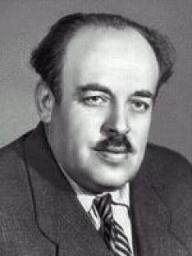At the time of the Russian Revolution, the nation was in political turmoil. Many people were left on the fringes unable to efficiently keep up with the ever-changing politics and events taking place across Russia. This is due to a couple things, one being the geography of Russia. Russia is a huge landmass with many rural peasant villages, making information spread slow. The second being the inaccessibility of news to many people. This is due to the low literacy rate in Russia at the time (Source). Given that the Revolution is supposed to cater to and uplift the working classes, this posed a problem. The solution was art and culture that allowed people to better understand the changing political tides in Russia through theatre, music, and other creative endeavors.
In addition to making the Revolution more accessible art also served as a way to empower people to fight on the side of the Red Army. Art and Culture served as one of the more pervasive avenues of propaganda on either side. However, I will be focusing on the pro-Russian Revolution propaganda found in Mass Culture in Soviet Russia by Sheila Fitzpatrick. Many of these poems, many times set to song and read, chanted, or sung aloud served as a rallying cry for the Proletariats and inspired them to fight for the vision of a brighter and more equitable future (Mass Culture in Soviet Russia, 55). For example, “The Young Gaurd” written by Aleksandr Bezymensky used lyrics of comradery and passion to inspire young comrades and remind them why they are fighting in the first place:
“Comrades in the struggle!
Go forward, meet the dawn,
With bayonets and grapeshot
We’ll lay the road ahead.
Go forward bravely,
keep your step firm,
Loft the ensign of youth on high!
We are the Young Guard Of the peasants and working class.
We have ourselves experienced Indentured servitude.
Our youth passed by us unawares,
Ensnared in slavery’s net.
We carried chains around our hearts— The legacy of darkness.
We are the Young Guard Of the peasants and working class.
Standing by our forges,
And bathing in our sweat,
We created with our work Wealth for other men.
But that labor, in the end, Forged fighters from us all,
Us—the Young Guard Of the peasants and working class.
We lift high the banner!
Comrades, over here!
Come, you can build with us The Republic of Laborers.
To make work the master of the earth,
And join us in one family—
To arms! Young Guard Of the peasants and working class!”
This poem is quite literally a call to arms. It was written to have an effect on the listener. In other words, the poem relies heavily on pathos, the aspect of a work that uses emotion as a persuasive tool. This poem which was later turned into a song (Mass Culture in Soviet Russia, 55), struck a chord in many people and was useful in keeping the Proletarian people engaged in the fight.
 Photo Portrait of Aleksandr Bezymensky (Source)
Photo Portrait of Aleksandr Bezymensky (Source)
Source:
Aleksandr Bezymensky, “The Young Gaurd”. In Mass Culture in Soviet Russia, edited by James von Geldern and Richard Stites, 54-55.
This was an interesting post! I really like that, in the beginning, you mentioned how the geography of Russia had an effect on the political turmoil. It fascinates me how, before mass communication, one side of the country must have gotten news long before the other side. I really think this had a huge effect on Russia’s development as a country.
LikeLike
I think a lot of the pieces of art published after the revolution was a call to arms. Not all of them necessarily had to concern actual physical harm, I believe that the new Soviet regime wanted to inspire its citizens to take control of the newly conquered country. Yet for the revolutionaries, the call to arms was quite literally a call to arms. Great post!
LikeLike
I really appreciate your point about how songs (and their lyrics) are especially critical to mobilizing people when literacy is limited. Bezymensky’s poem both pulls at the heart strings and holds out the rallying cry for the peasants and the working class. If you’re interested in how these songs sounded, check out this site: http://www.sovmusic.ru/english/list.php?part=1&gold=yes&category=komsom
Also, is that the correct page number in the MAss Culture book? (In mine the poem is on pp. 16-17).
LikeLike
Thanks for your feedback, I think the page numbers may have been off on the ebook I used for this blog! My apologies!
LikeLiked by 1 person
Oh of course, it’s the ebook! That makes perfect sense.
LikeLike
I think it is really cool how this was a call to arms but could also be propaganda for the war. It was informative but also inspiring.
LikeLike